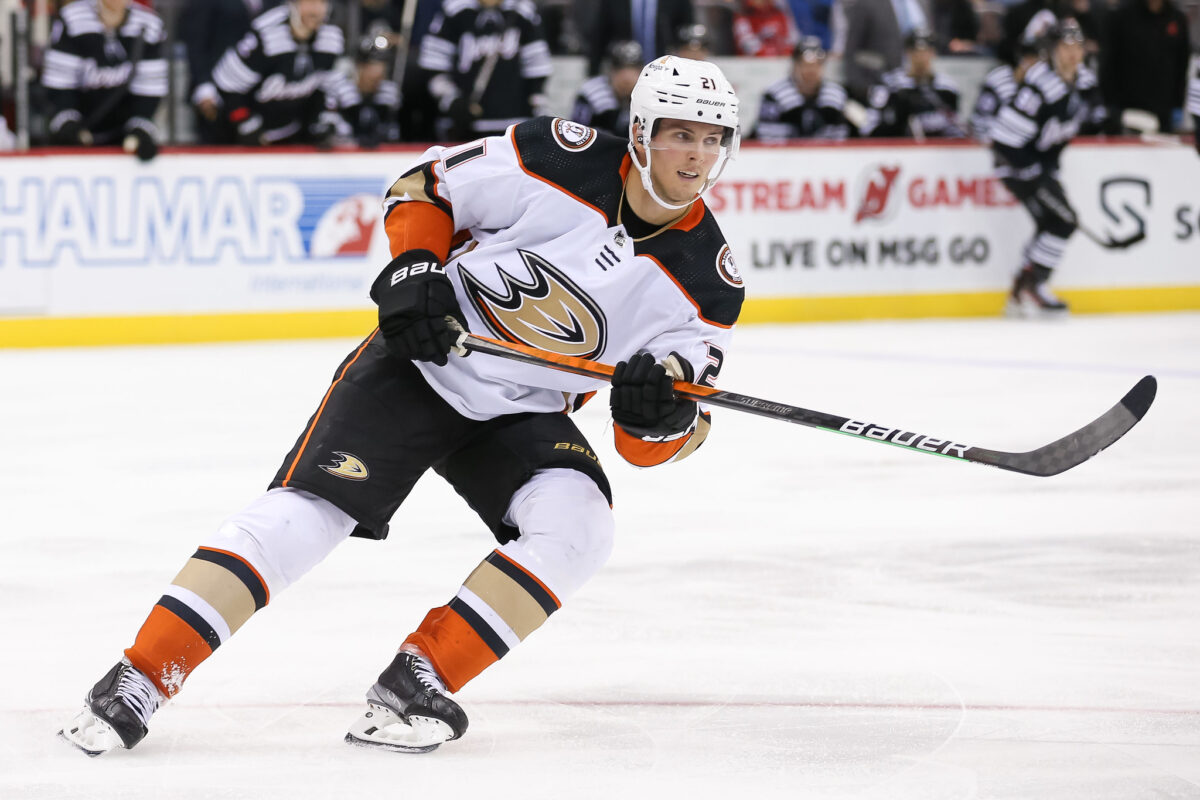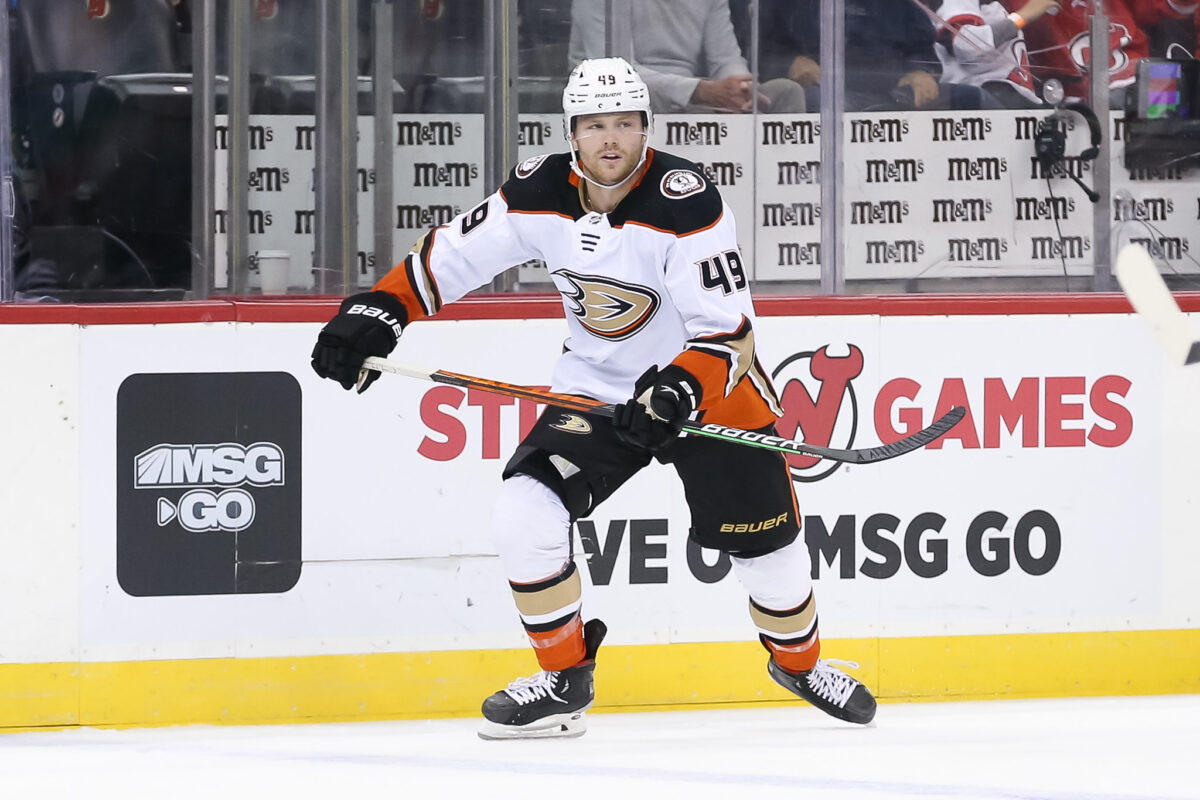The Vancouver Canucks’ buyout of Oliver Ekman-Larsson’s contract provides $7.1 million in cap relief for this season. General manager (GM) Patrik Allvin will need to spend the money wisely and not repeat the sins of atrocious cap management like former Canucks GMs. President of hockey operations Jim Rutherford outlined plans for the Canucks in January. In a press conference, he mentioned how he envisions the Canucks going through a retool and stating a preference for “younger NHL players that maybe didn’t work out in their entry-level contract and [bringing] them in [to] give them a second chance.” The quote leaves a potential outline to speculate the types of players the Canucks may be interested in.
Related: Canucks’ 2023 Offseason Trade Targets: Tampa Bay Lightning
The Anaheim Ducks are a rebuilding team void of top-end talent outside their budding stars. They do have an assortment of veterans on bad contracts. Former Canucks GMs would gobble these players up. Instead, using the information Rutherford provided, let’s look at some trade targets who may need a change of scenery after a mediocre to disappointing start to their career with the Ducks.
Isac Lundestrom
Isac Lundestrom is the odd center out in Anaheim. The Ducks have a ridiculous amount of talent developing at the center position in their organization. Trevor Zegras, Mason McTavish, and probable second-overall pick Adam Fantilli can all play the part. They also have Ryan Strome signed for another four years at $5 million per season. The struggling former first-round pick from 2018 cannot carve out a significant role on a bottom-feeding Ducks roster. He fits the theoretical mold Rutherford outlined in his January press conference. He is a young player signed one more season for $1.8 million. The cost to acquire him should be low too. While the Ducks may not want to move him due to his age, they may be inclined to if a draft pick or a swap of struggling players is on the table. Any option is better than letting his development stall in the Ducks’ system.

This season with the Ducks, Lundestrom predominantly played bottom-six minutes. His offensive potential may be low, but he could still become a defensively responsible middle-six center capable of chipping in offense. He scored just four goals and ten assists for 14 points in 61 games this season. A fractured finger sidelined him for six weeks this season. During the 2021-22 season, his first full-time NHL campaign, he scored 16 goals and 13 assists for 29 points. He also tied a Ducks franchise record set by Corey Perry, potting four shorthanded goals. He flashed his offensive game while displaying his defensive ability last season. However, Lundestrom’s offense slumped this season. His offensive numbers are bleak, but other areas of his game impressed. He had 23 takeaways to 13 giveaways, threw 20 hits which are impressive for his size, and drew significantly more penalties than he took – two penalty minutes taken to 14 drawn.
Lundestrom is a cheap, defensively responsible center struggling to put it together in a system that is not prioritizing his development. He is emerging as a two-way center. The Canucks can swing at him due to his low trade value, similar to what they did with Vitali Kravstov, and see if he pans out. At worst, he would be a cost-effective third-line center this season. The Canucks need center depth, and he may be the best option to fix that problem. Ducks GM Pat Verbeek may be willing to part with Lundestrom if he is able to get decent value for him.
Max Jones
Max Jones is another young, cheap forward from the Ducks. While he does not fill a position of need, as the Canucks have plenty of left-wingers in their organization, that did not stop Allvin from taking a chance on Kravstov from the New York Rangers. The bruising forward would be a great addition to the Canucks middle six. His 110 hits would have landed him fourth on the Canucks, behind Dakota Joshua, J.T. Miller, and Kyle Burroughs. He scored nine goals and ten assists for 19 points in a career-high 69 games this season. Upper-body injuries sidelined him periodically this year. His playstyle will always leave him vulnerable to injuries, which is a risk to consider before acquiring him. The former 2016 first-round pick has struggled to maintain a spot in the Ducks’ lineup due to injuries. When he is in, the power forward is not scoring at the rate expected of a first-round forward.

Like Lundestrom, Jones is a relatively responsible defensive forward who has yet to find his offensive touch. His Corsi For was only 43 percent this year. The low number is forgivable, as the Ducks were an awful defensive team during the 2022-23 season. He had 22 takeaways to 18 giveaways while starting 11.1 percent of his shifts in the defensive zone. Verbeek may find Jones expendable as the Ducks have a flurry of forward prospects ready to graduate, and they will need playing time to develop. Changing teams may help spark Jones’ offense while providing the Ducks with additional assets. His cap hit of $1.295 million through the 2023-24 season is easily buriable in the American Hockey League if he does not pan out and is a cost-effective trading option if the Canucks like his playstyle.
Jones and Lundestrom are two cheap, young players a year away from restricted free agency that the Canucks should target. A change of scenery and greater opportunity could change their career trajectory, becoming important pieces on a winning hockey club. The two forwards also fit the bill Rutherford mentioned in January.
Defenseman Jackson LaCombe and forward Benoit-Olivier Groulx are also intriguing players for the Canucks; however, considering the Ducks are still rebuilding and they are performing well in leagues below the NHL, it does not make sense from their perspective to part with them. Jones and Lundestrom, at worst, would be a good gamble for the Canucks, and at best, emerge as strong, two-way top-six forwards.
